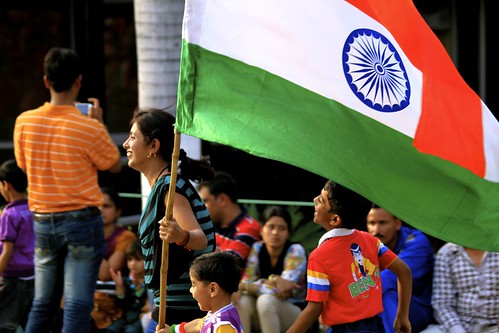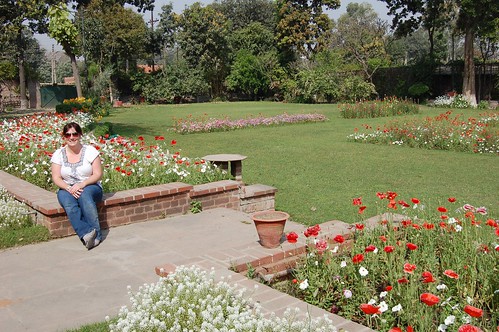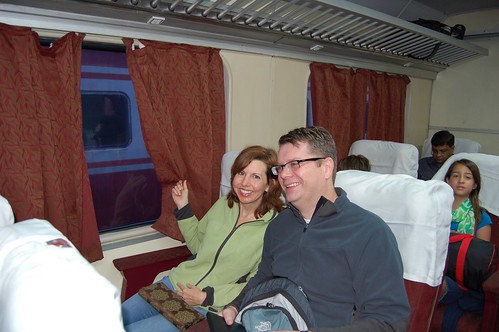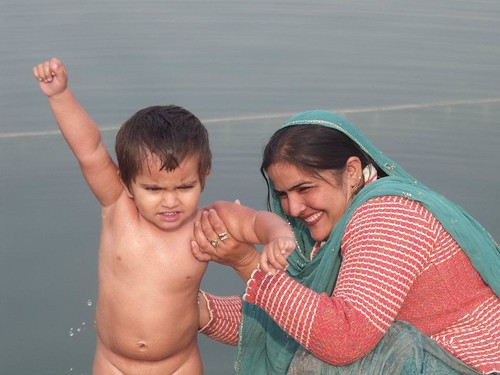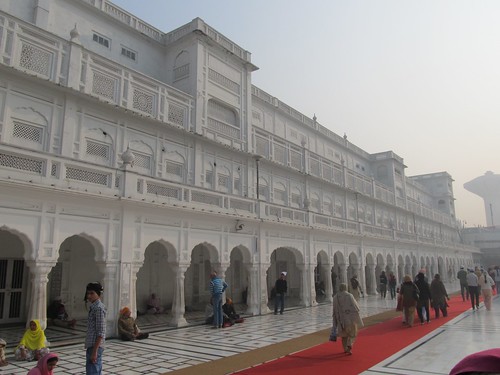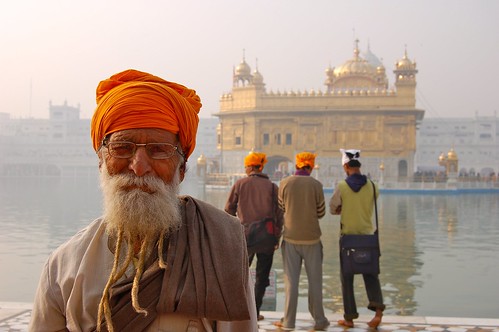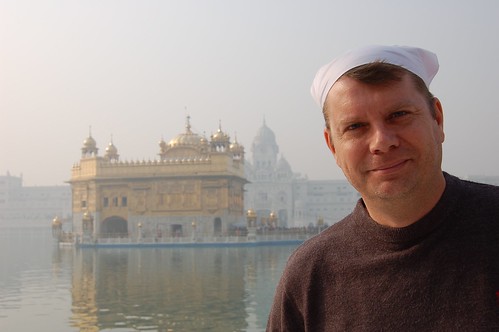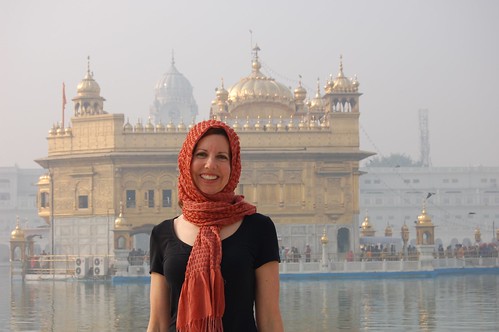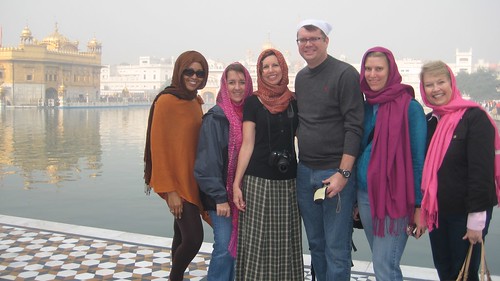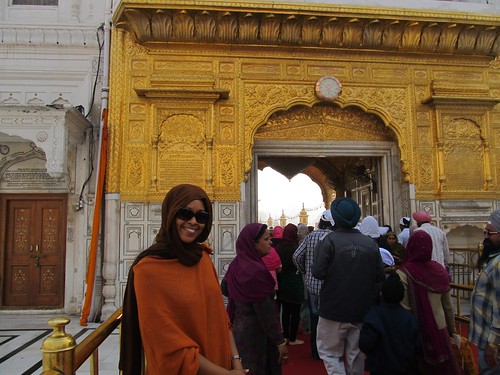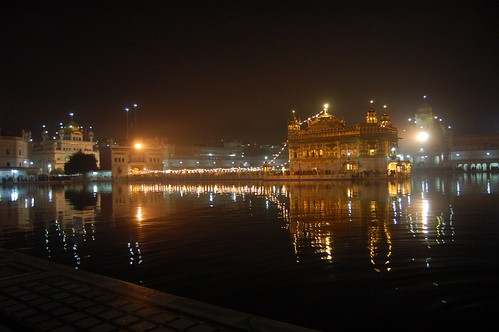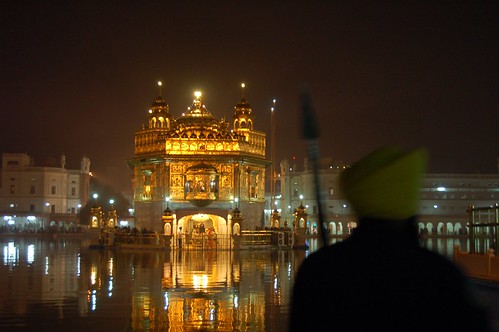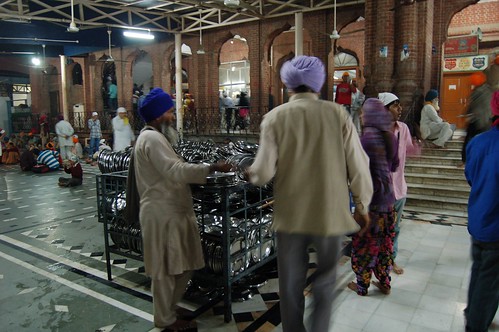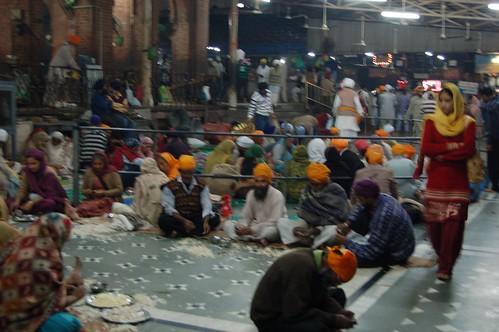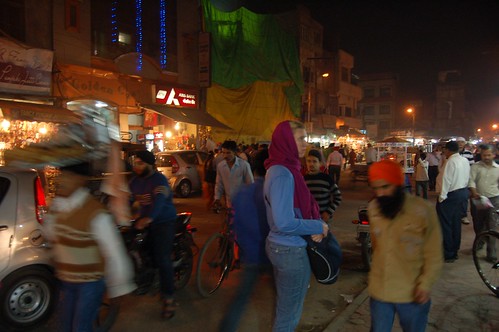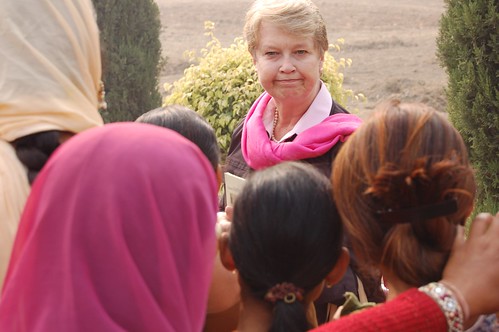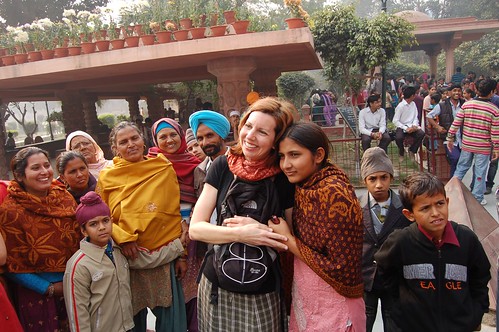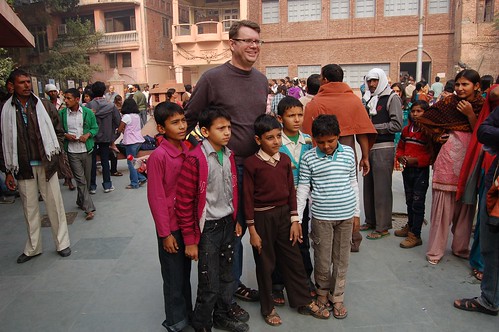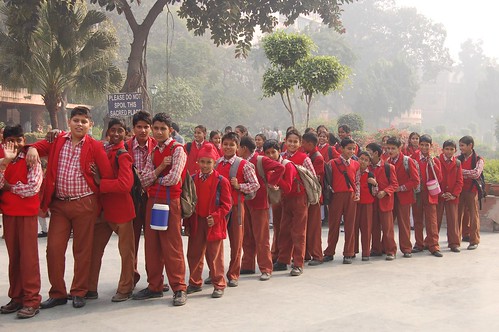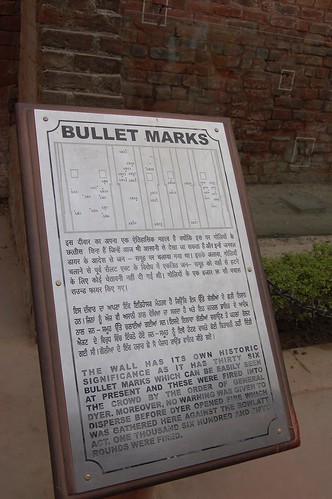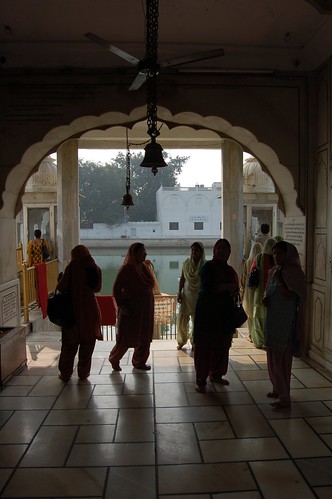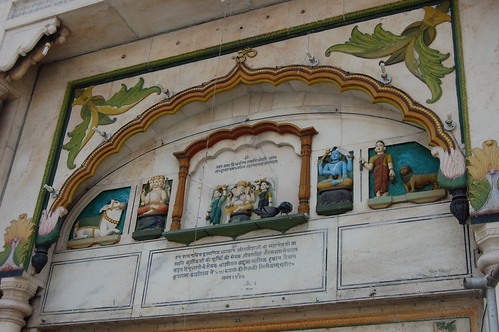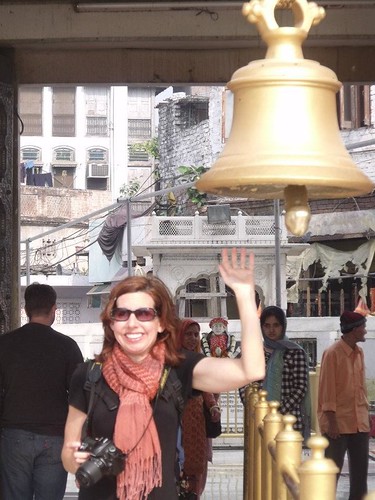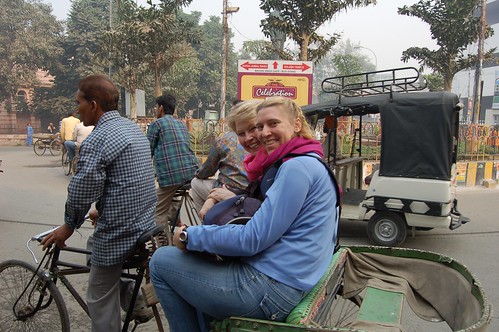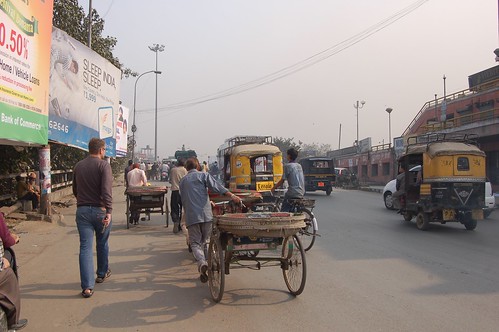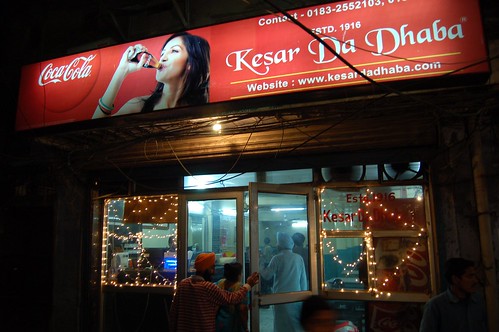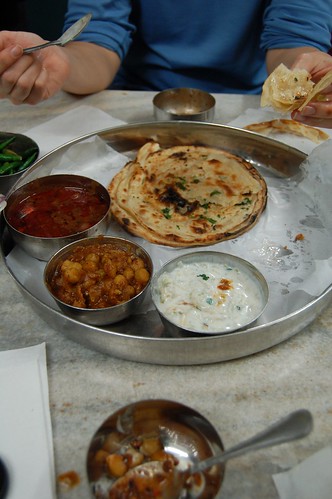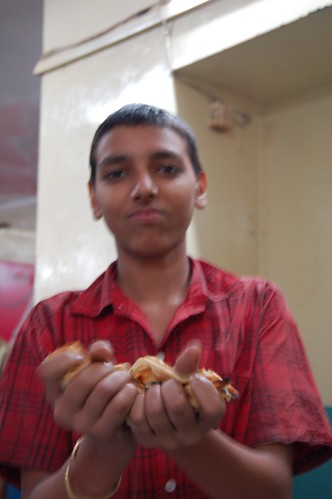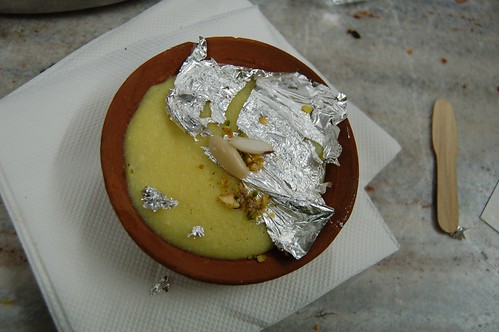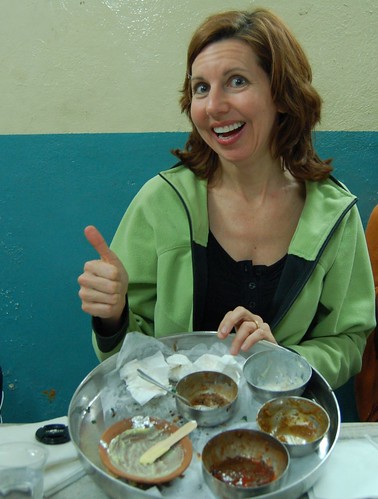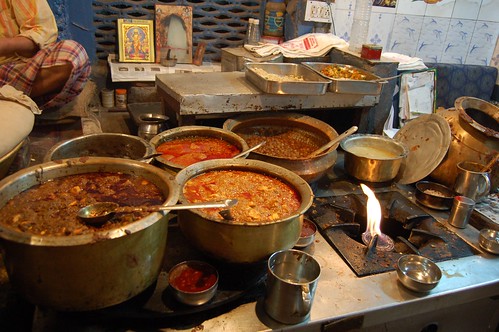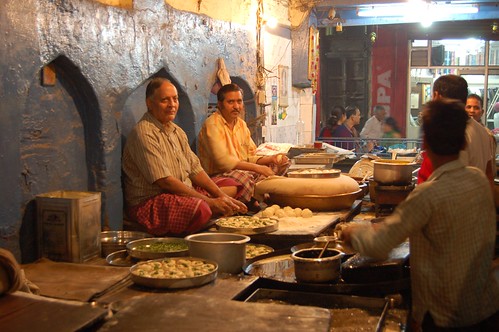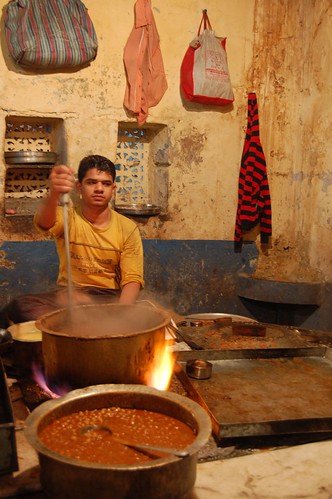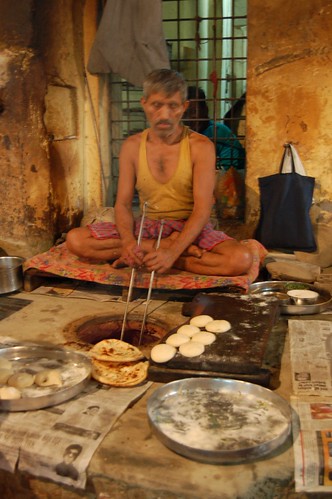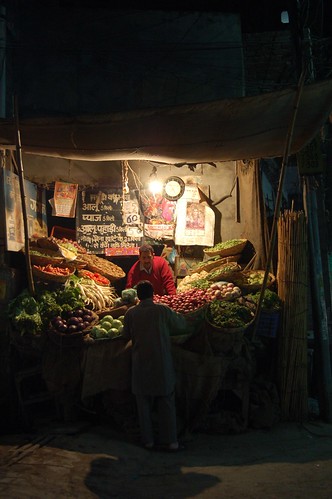Tony and I enjoyed Amritsar so much last fall that we decided to share it with our guests. The four of us took the train on April 1 for six hours to the state of Punjab. At the Amritsar train station, a young taxi driver approached us. Sunny gave us a ride to our hotel, and we liked him so much we hired him for our whole visit.

At the recommendation of our school’s travel agent, we stayed at Mrs. Bhandari’s Guesthouse, which featured a pool, outdoor eating area, garden, courtyard with water buffalo and a humble collection of rooms. Liz snapped this shot of our fellow guesthouse residents.

We checked in, grabbed a quick snack, and took off for the Wagah Border-Closing Ceremony at the Pakistan-India border, about 45 minutes out of town.
Just like our last visit, food and drink vendors lined the path approaching the stadium. I loved this papaya seller with his papaya-colored shirt and turban. Theresa got the shot.

Sno-cones made on the spot with the Indian flag colors!
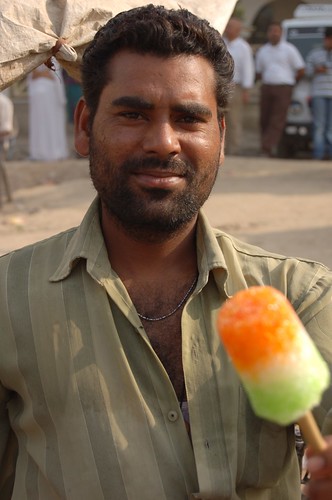
A water boy wisely targeting the men in line. This may be the only place on the planet where the women’s line moves faster!
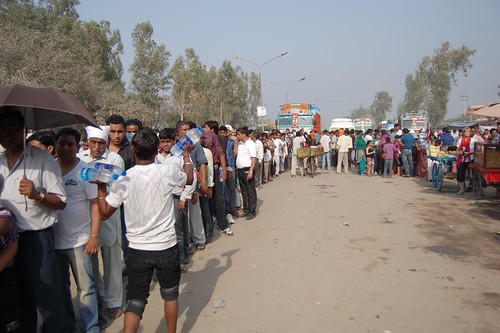
After passing through VIP security, we took our seats in the Foreigners Gallery and watched the bedlam. A full Bollywood street party was followed by people actually LINING UP to run a short distance with the Indian flag.

Eventually the hollering, high-stepping, gate-slamming, foot-stomping, thumb-gesturing, hat-straightening, mustache-twisting, anthem-singing, flag-lowering antics came to a close. I took so many pictures on our last visit. This time I just watched. Check out the Pakistani guard (black beret and shades) who Theresa photographed. You do NOT want to mess with him.
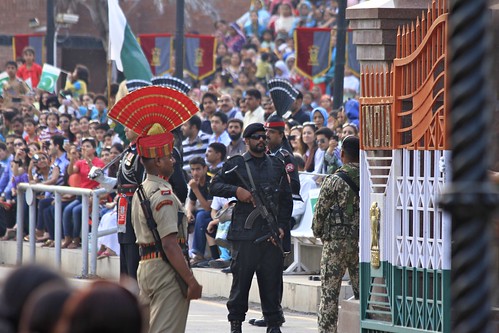
Returning from the border ceremony, Sunny eagerly asked if we knew the story of Ganesha. I did, only because I had heard it at school during India Week. However, Sunny told the tale with such exuberance and joy that I just let him run with it. Here’s the story, fyi. (This is NOT how Sunny told it. His rendition featured generic nouns slapped with unconjugated verbs in an unintelligible but joyous English soup.) From the website religionfacts.com:
Incensed by the refusal of her husband to respect her privacy, to the extent of entering her private chambers even while she was having her bath, Parvati decided to settle matters once and for all. Before going for her bath the next time, she rubbed off the sandalwood paste on her body and out of it created the figure of a young boy. She infused life into the figure and told him he was her son and should guard the entrance while she bathed.
Soon after, Shiva (Lord of destruction and husband of Parvati) came to see Parvati but the young boy blocked his way and would not let him in. Shiva, unaware that this lad was his son, became furious and in great anger fought with this boy whose head got severed from his body in the ensuing battle. Parvati, returning from her bath, saw her headless son and threatened in her rage to destroy the heavens and the earth, so great was her sorrow.
Shiva pacified her and instructed his followers (known as ganas) to bring the head of the first living being they encounter. The first creature they encountered was an elephant. They thus cut off its head and placed it on the body of Parvati’s son and breathed life into him. Thus overjoyed, Parvati embraced her son.
Theresa took this great shot of the dashboard decor in Sunny’s car: Ganesha in a Clam Shell. I love it so much! No, I don’t know why this Hindu elephant god is resting on a mollusk, but there’s no denying that it’s awe inspiring.

Basically re-creating our first Amritsar visit, we took Liz and Theresa to Kesar da Dhaba for dinner. Everyone seemed happy with their food, and the restaurant owner remembered me from November! We bought dinner for Sunny, who tried to have a philosophical discussion with Tony about the Sikh religion.
After dinner, Sunny drove us to the Golden Temple. It was not the peaceful oasis we remembered from five months ago! It was a mob scene … a happy, spiritual, family-oriented mob scene, but a mob scene nonetheless. I was trying to take a photo of Tony and Liz in front of the temple when this family crowded in to the shot. Okayyyy.

Another family shoved a baby into Liz’s arms, which she confusedly cuddled until the mother realized its absence and abruptly yanked it back. Craziness! I liked this calm lady who was chilling and enjoying the glowing temple.

The next morning, Liz and Tony ventured back to the temple and the Jalianwallah Bagh Memorial. Apparently, they hung out with this guy.
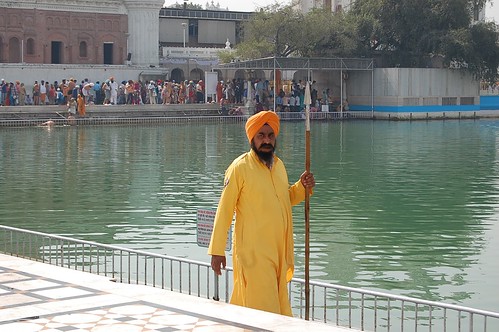
Theresa and I lazed around the guesthouse, taking photos of the colorful garden.
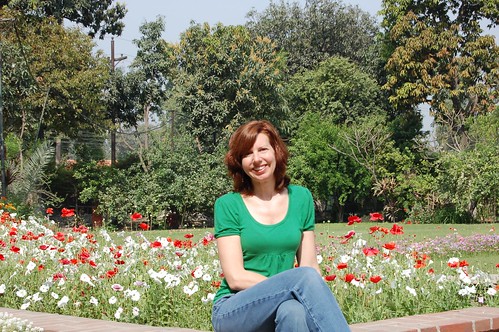
For more details on the places we visited, check out my old posts about Amritsar.
On April 2, it was time to head our separate ways. Tony and Liz returned to Delhi and later took a daytrip to Agra. Theresa and I drove to McLeod Ganj, a hill station in the Himalayas and home of the exiled Dalai Lama. That story is coming up next!


